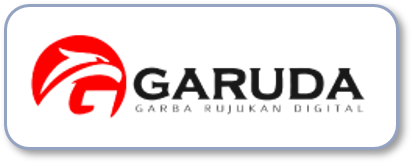Empowering EFL Students’ Speaking Ability Through Digital Storytelling: A Quasi Experimental Study
Keywords:
Digital Storytelling, Read to Me, Fairytales, Speaking AbilityAbstract
Speaking ability is essential in 21st-century education, yet many students still struggle with limited vocabulary, unclear pronunciation, and low comprehension. This study examined the impact of two digital storytelling applications, Read to Me and Fairytales, on enhancing students’ speaking ability. A quantitative approach with a quasi experimental method are used in this research. The research was conducted at a private senior high school in Bogor using non-equivalent control groups design. Two tenth-grade classes were selected, both of classes chosen randomly by lottery system, with one group using Read to Me and the rest of the class using Fairytales. The research focused on speaking ability with the component vocabulary, pronunciation, and comprehension. The results were analyzed using an independent samples t-test, which showed a significant difference between the groups’ post-test scores (t = 2.32, df = 63, p < 0.05). The experimental group which is treated by Read to Me showed greater increased, likely due to features such as audio narration, highlighted text, and adjustable speed, which offered better language input. In conclusion, digital storytelling with interactive elements can effectively influences students’ speaking ability in phase E.
References
Awaludin, N. S., Vonti, L. H., & Irdiyansyah, I. (2023). The Use of Kahoot Application on Students’ Vocabulary Mastery. Journal of English Language Studies, 5(1), 47–54.
Brown, H. D. (2004). Teaching by Principles: Languange Assesment. . New York: Pearson Education.
Cahyanti, N. N., & Nuroh, E. Z. (2023). Digital Storytelling Media to Improve Students’ Speaking Skills in Elementary School. Journal of Education Technology, 7(2), 261–268
Choo, Y. B., Abdullah, T., & Nawi, A. M. (2020). Digital storytelling vs. Oral storytelling: An analysis of the art of telling stories now and then. Universal Journal of Educational Research, 8(5 A), 46–50.
Des, O. :, Fitri, A., & Idayani, A. (2021). An Analysis Of Students’ Speaking Ability In Retelling Story On Descriptive Text At The Second Grade Students Of SMP YLPI Pekanbaru (Analisis Kemampuan Berbicara Siswa dalam Cerita Teks Deskriptif pada siswa kelas II SMP YLPI Pekanbaru). Persfektif Pendidikan Dan Keguruan, 12(1).
Egbert Joy. (2005). CALL Essentials Principles and Practice in CALL Classrooms. Teachers of English to Speakers of Other Languages, Inc. (TESOL).
Fidriani, A. J. (2022). Video Vlog As Teaching Media In Improving The Students’ Speaking Ability In Procedure Text. JOURNAL OF ENGLISH EDUCATION AND LINGUISTICTS.
Franchisca, S. N. (2024). The Impact of Motivation on Foreign Language Learning: A Longitudinal Study. Journal on Education, 06(02), 11082– 11093. .
Harmer, J. (2001). The Practice of English Language Teaching. Harlow: Pearson Education.
Haroon, A. M. (2021 The Effectiveness of Teaching Digital Stories in Developing EFL Primary Pupils’ Speaking Skill. Harris, D. (1969). Testing English As a Second Languange.
Herawati Atti, &. Irdiyansyah Iyan. (2022). Research On ELT. Bogor: Penerbit Lindan. Bestari
Maryam English Teacher, S., & Barat Daya, P. (2020). Utilizing Communicative Languange Games To Improve Students’ Speaking Ability. JOLLT Journal of Languages and Language Teaching, 8(3), 251.
Muhammad, I., Rasmi, I., & English, D. (2020). Utilizing Audio Visual Aids To Improve English Speaking Skill For The Eight Grade Students Of SMP Negeri 3 Banawa. In Datokarama English Education Journal (Vol. 1, Issue 1).
Nair, V., & Yunus, M. M. (2021). A systematic review of digital storytelling in improving speaking skills. In Sustainability (Switzerland) (Vol. 13, Issue 17). MDPI.
Puteri Elyani, E., Al Arief, Y., Amelia, R., Negeri Banjarmasin, P., & Fitriyah Asrimawati, I. (2022.). Enhancing Students’ Speaking Skill Through Digital Storytelling. In FKIP Universitas Lambung Mangkurat Banjarmasin (Vol. 5).
Prayudi, R. A. (2021). The Use Of Technology In English Teaching & Learning Process. . Jurnal Riset Dan Inovasi Pembelajaran (Vols. 1–1, Issue 2, pp. 102–111)
Satriawan, K., Made, I., & Skolastika, P. (2023.). The Analysis of Students’ Speaking Ability in Speech At English Literature Department of Mahasaraswati Denpasar University. BULLET : Jurnal Multidisiplin Ilmu
Satya, T. I. (2022). Mobile Assisted Language Learning (MALL) untuk Pembelajaran Bahasa. Badan Pengembangan Dan Pembinaan Bahasa.
Syafryadin, Haryani, Salniwati, & Putri, A. R. A. (2019). Digital Storytelling Implementation for Enhancing Students’ Speaking Ability in Various Text Genres. International Journal of Recent Technology and Engineering (IJRTE), 8(4), 3147– 3151.
Muhammad, I. R. (2021). Utilizing Audio Visual Aids To Improve English Speaking Skill For The Eight Grade Students Of SMP Negeri 3 Banawa. Datokarama English Education Journal (Vol. 1, Issue 1).
Widagdo, A. (2021). Pengajaran Pengucapan Kata Bahasa Inggris: Tantangan Mengajar EFL Di Negara Yang Tidak Berbahasa Inggris.
Zulfikhar, M. H. (2024). Dampak Integrasi Teknologi dalam Pembelajaran Terhadap Prestasi Akademis Mahasiswa Perguruan Tinggi. Journal on Education, 6(4), 18381-18390.
Downloads
Published
Issue
Section
License
Copyright (c) 2024 Risqia Azizah, Iyan Irdiyansyah, Asih Wahyuni

This work is licensed under a Creative Commons Attribution-ShareAlike 4.0 International License.
Asshika: Journal of English Language Teaching and Learning y Saniya Institute is licensed under Creative Commons Attribution ShareAlike 4.0
It means that:
- Adapted Material means material subject to Copyright and Similar Rights that is derived from or based upon the Licensed Material and in which the Licensed Material is translated, altered, arranged, transformed, or otherwise modified in a manner requiring permission under the Copyright and Similar Rights held by the Licensor. For purposes of this Public License, where the Licensed Material is a musical work, performance, or sound recording, Adapted Material is always produced where the Licensed Material is synched in timed relation with a moving image.
- Adapter's License means the license You apply to Your Copyright and Similar Rights in Your contributions to Adapted Material in accordance with the terms and conditions of this Public License.
- BY-SA Compatible License means a license listed at creativecommons.org/compatiblelicenses , approved by Creative Commons as essentially the equivalent of this Public License.
- Copyright and Similar Rights means copyright and/or similar rights closely related to copyright including, without limitation, performance, broadcast, sound recording, and Sui Generis Database Rights, without regard to how the rights are labeled or categorized. For purposes of this Public License, the rights specified in Section 2(b)(1)-(2) are not Copyright and Similar Rights.
- Effective Technological Measures means those measures that, in the absence of proper authority, may not be circumvented under laws fulfilling obligations under Article 11 of the WIPO Copyright Treaty adopted on December 20, 1996, and/or similar international agreements.
- Exceptions and Limitations means fair use, fair dealing, and/or any other exception or limitation to Copyright and Similar Rights that applies to Your use of the Licensed Material.
- License Elements means the license attributes listed in the name of a Creative Commons Public License. The License Elements of this Public License are Attribution and ShareAlike.
- Licensed Material means the artistic or literary work, database, or other material to which the Licensor applied this Public License.
- Licensed Rights means the rights granted to You subject to the terms and conditions of this Public License, which are limited to all Copyright and Similar Rights that apply to Your use of the Licensed Material and that the Licensor has authority to license.
- Licensor means the individual(s) or entity(ies) granting rights under this Public License.
- Sui Generis Database Rights means rights other than copyright resulting from Directive 96/9/EC of the European Parliament and of the Council of 11 March 1996 on the legal protection of databases, as amended and/or succeeded, as well as other essentially equivalent rights anywhere in the world.
- You means the individual or entity exercising the Licensed Rights under this Public License. Your has a corresponding meaning.
















